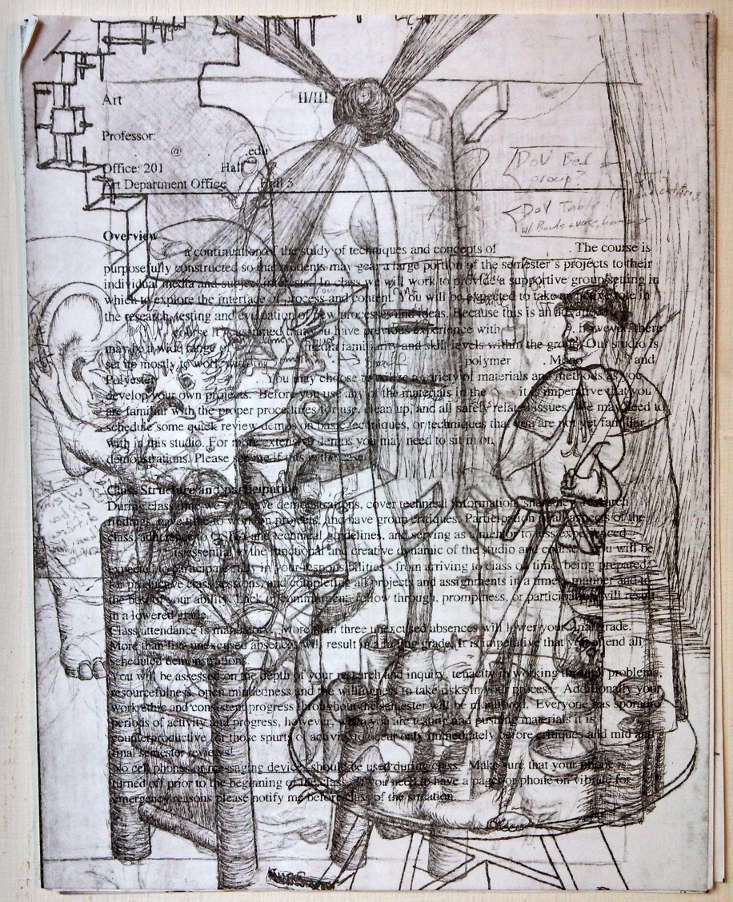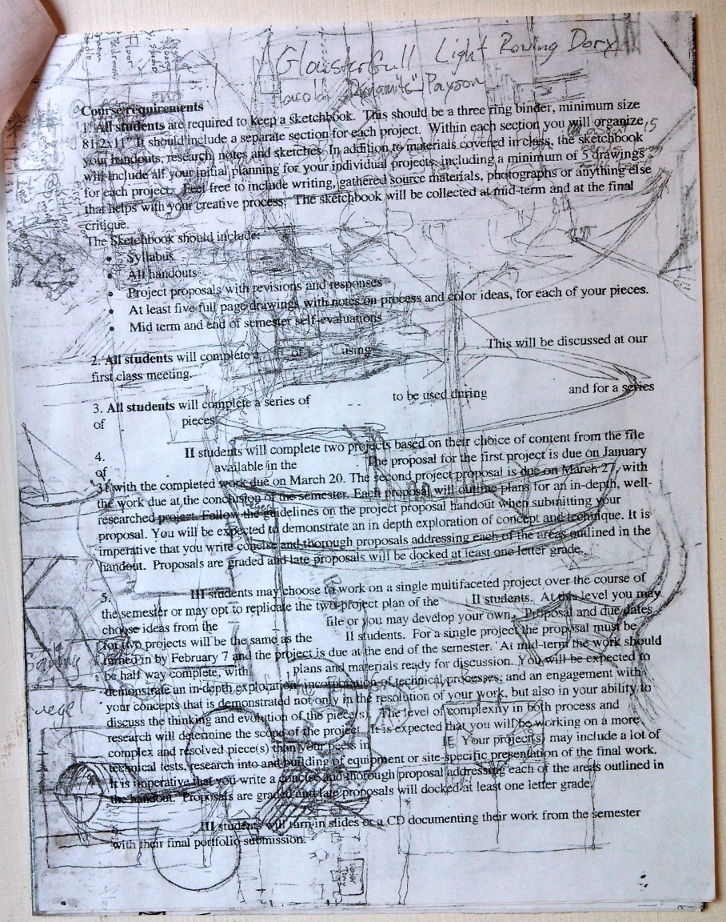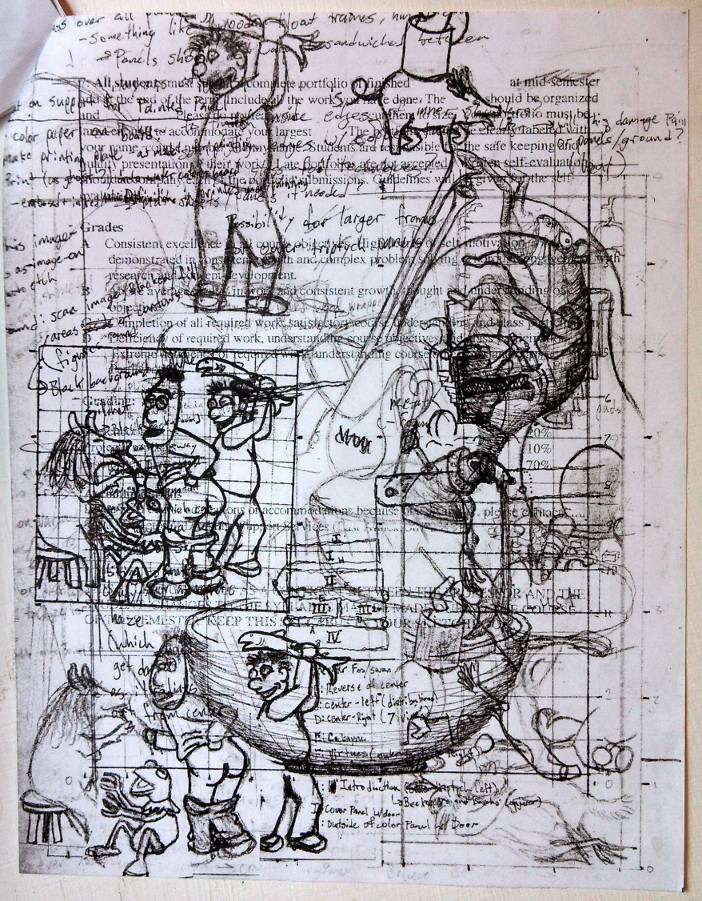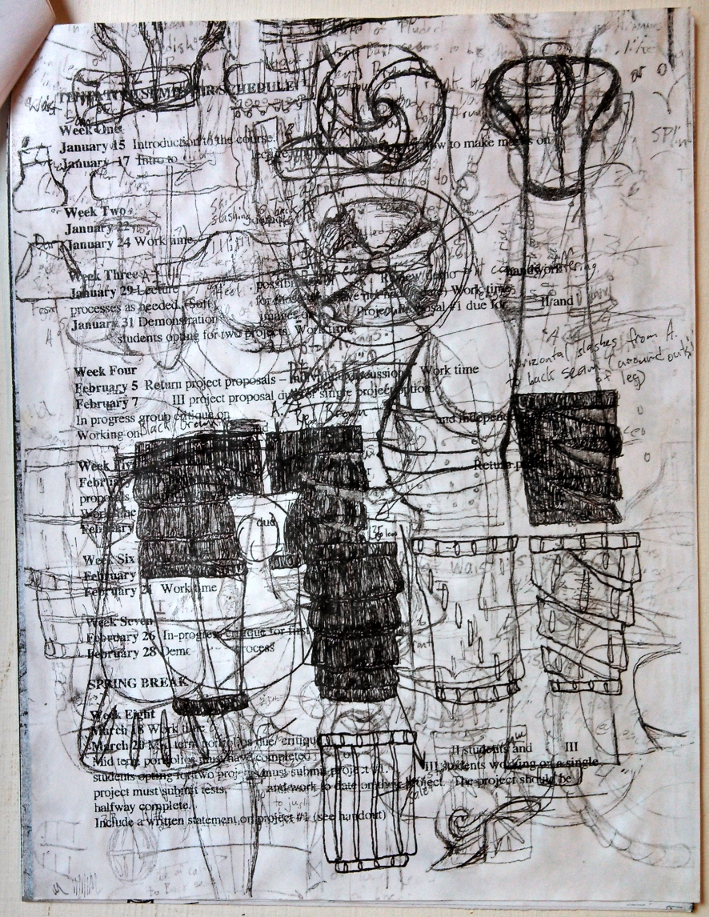2008?
Polyester Plate Lithograph, 8.5" x 11"





In Printmaking III we had two assignments for learning about Polyester Plate Lithography. First there was a brief assignment to learn the basics of how lithography works, then a larger project of multiple prints. Lithography was an interesting innovation in printmaking by which multiple prints could be made fairly quickly by eliminating the need to wipe extra ink from the plate. This made it very desirable for commercial reproduction of artwork, and for printing pictures for books. Lithography was sort of like the 19th-20th century equivalent of a photocopy machine. The "litho" in lithography comes from the use of a smooth stone being the traditional surface that the image would be printed from.
When I was doing printmaking at the University of Maine from 2006 to 2008 the printmaking studio still had a couple of the heavy lithography stones, but had switched over to teaching a new technique which prints from paper-thin sheets of polyester (not fabric sheets, more like plastic sheets). The polyester sheets have a couple advantages... they don't weigh eighty pounds, don't need to worry about chipping the edges or resurfacing, but the cool thing is that they can be put through a photocopy machine (and I really made use of that with this project).
While lithography gets its name from the use of stones as a printing plate it is really the process of creating a lithograph print that defines the technique. Lithography works on the principle that oil based ink will stick to other oil based things, and oil based ink will not stick to water-based things. The basic idea is that a grease crayon is used to draw your image out on the surface of the lithograph plate. The plate is then wiped with water and gum arabic which coats non-greasy areas but does not stick to the marks made by the crayon. While the plate is still wet it is rolled with oil-based ink, which sticks to the crayon drawing but not to the wet areas. The plate and paper to be printed on are then put through a special printing press to print the image, and re-inking the plate only requires another wiping with the gum solution and another roll-out of ink onto the plate, which makes it a very quick process. As mentioned earlier, the polyester plates we used in class can be put through a copying machine, and when preparing the plate to print, the toner from the copier has the same effect with water/gum arabic and oils as the grease crayon.
This project was a reflection on the dichotomy between projects of personal interest and projects for art classes, and the tension that had been growing between those two surprisingly exclusive things. I started out by scanning the syllabus for my Printmaking III class and digitally removing any mention of details particular that class - making what seems like a "fill in the blanks" art class syllabus. I then mirrored all the scanned pages since prints come out as mirror images of the plate they are printed from, and had the pages printed out on some polyester lithograph plates. I then flipped through some of my sketchbooks of non-school stuff, picked some pages I liked, and had those copied to their own polyester plates. Then I made lithograph prints of the syllabus plates, and put them through the press again to print the sketchbook images over the syllabus.